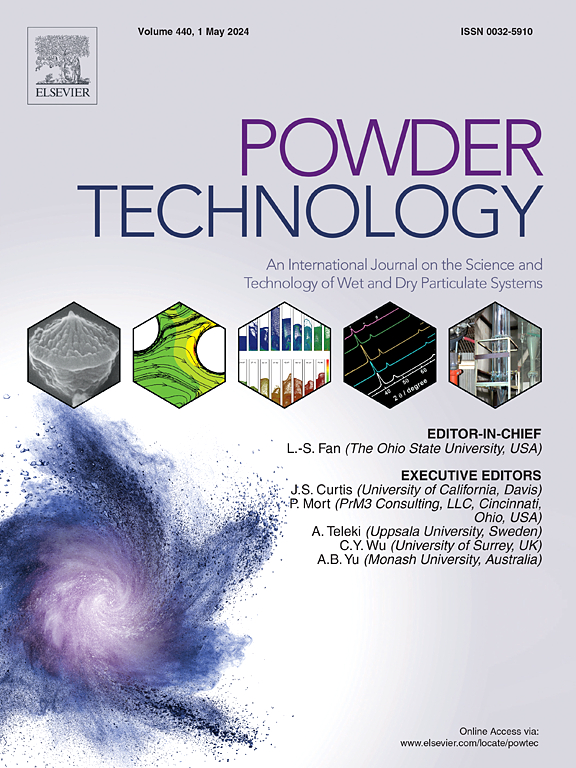Modification and experimental validation of simplified Zehner-Bauer-Schlünder model for estimating effective thermal conductivity of gas–solid metal powder beds
IF 4.5
2区 工程技术
Q2 ENGINEERING, CHEMICAL
引用次数: 0
Abstract
Precisely predicting the effective thermal conductivity (ETC) of gas–solid powder beds is crucial for industrial applications. In this study, influence of the Smoluchowski effect on the prediction of ETC under various pressures (pg) and gas atmospheres was analyzed. Subsequently, the Smoluchowski effect was incorporated to modify all terms associated with gas thermal conductivity in Kunii–Smith (KS) and simplified Zehner–Bauer–Schlünder (S-ZBS) models. Additionally, the modified S-ZBS and KS models were compared to another three classical theoretical models. Results indicate that the modified S-ZBS model showed the highest prediction accuracy, and could estimate precisely ETC of gas–solid powder beds under helium, nitrogen, and argon atmospheres at the temperature (Tave) of 20 and 60 °C, at pg = 0.3–4.0 MPa, and under air atmosphere at Tave = 30–75 °C. Finally, the reliability of the modified S-ZBS model was further validated by measured ETC results of four types of metal powder beds and experimental data from published literature.

求助全文
约1分钟内获得全文
求助全文
来源期刊

Powder Technology
工程技术-工程:化工
CiteScore
9.90
自引率
15.40%
发文量
1047
审稿时长
46 days
期刊介绍:
Powder Technology is an International Journal on the Science and Technology of Wet and Dry Particulate Systems. Powder Technology publishes papers on all aspects of the formation of particles and their characterisation and on the study of systems containing particulate solids. No limitation is imposed on the size of the particles, which may range from nanometre scale, as in pigments or aerosols, to that of mined or quarried materials. The following list of topics is not intended to be comprehensive, but rather to indicate typical subjects which fall within the scope of the journal's interests:
Formation and synthesis of particles by precipitation and other methods.
Modification of particles by agglomeration, coating, comminution and attrition.
Characterisation of the size, shape, surface area, pore structure and strength of particles and agglomerates (including the origins and effects of inter particle forces).
Packing, failure, flow and permeability of assemblies of particles.
Particle-particle interactions and suspension rheology.
Handling and processing operations such as slurry flow, fluidization, pneumatic conveying.
Interactions between particles and their environment, including delivery of particulate products to the body.
Applications of particle technology in production of pharmaceuticals, chemicals, foods, pigments, structural, and functional materials and in environmental and energy related matters.
For materials-oriented contributions we are looking for articles revealing the effect of particle/powder characteristics (size, morphology and composition, in that order) on material performance or functionality and, ideally, comparison to any industrial standard.
 求助内容:
求助内容: 应助结果提醒方式:
应助结果提醒方式:


